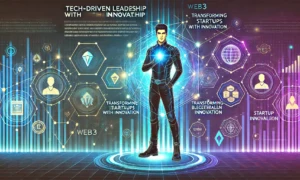Artificial intelligence (AI) is often seen as a double-edged sword in the job market. While it automates processes and increases efficiency, it also disrupts traditional employment structures. However, AI’s impact is not solely about job displacement—it is also driving job creation in ways that redefine industries and workforce dynamics.
AI’s Role in Job Displacement
- Automation of Repetitive Tasks:
- AI is automating jobs that involve routine and predictable tasks.
- Example: Manufacturing roles, data entry, and telemarketing are increasingly being replaced by AI-powered systems.
- Impact on Low-Skilled Jobs:
- Jobs that require minimal training or involve repetitive manual labor are most at risk.
- Example: Self-checkout systems in retail and automated logistics in warehouses.
- Challenges for Middle-Skilled Roles:
- Administrative tasks and mid-level jobs are also being automated, creating challenges for workers who lack specialized skills.
- Example: AI tools handling payroll processing and customer support queries.
AI’s Role in Job Creation
- Emergence of New Roles:
- AI has given rise to entirely new job categories, particularly in technology and data science.
- Examples include:
- AI Trainers: Professionals who teach AI systems how to interpret data.
- Machine Learning Engineers: Developers building AI algorithms.
- Data Analysts: Specialists interpreting complex datasets for business insights.
- Expanding Adjacent Industries:
- AI is driving growth in industries like cloud computing, cybersecurity, and Internet of Things (IoT), creating jobs in supporting sectors.
- Opportunities in Creative Fields:
- AI-powered tools are enhancing roles in design, marketing, and media production, enabling professionals to produce high-quality work faster.
- Demand for Ethical Oversight:
- The rise of AI has created roles focused on ensuring ethical and unbiased AI implementation, such as AI ethicists and compliance officers.
Balancing Job Creation and Displacement
- Reskilling and Upskilling:
- Workers need to adapt by acquiring new skills relevant to the AI-driven economy.
- Governments and businesses are investing in training programs to prepare the workforce for AI integration.
- Lifelong Learning:
- Continuous learning is becoming essential as industries evolve.
- Online platforms offering AI-related certifications, such as Coursera, edX, and Udemy, are gaining popularity.
- Focus on Human-AI Collaboration:
- Instead of replacing workers, AI is increasingly being used to complement human abilities.
- Example: AI-assisted tools in healthcare that support doctors in diagnostics.
Industries Most Affected by AI
- Healthcare:
- AI is creating roles in healthcare technology while automating administrative and diagnostic tasks.
- New roles: Health data analysts, AI-powered medical imaging specialists.
- Retail:
- Automation is streamlining supply chains and inventory management, but also creating demand for tech-savvy retail managers and AI implementation specialists.
- Education:
- AI-driven learning platforms are reshaping education, creating opportunities for instructional designers and AI curriculum developers.
- Finance:
- AI is transforming risk assessment, fraud detection, and portfolio management, requiring financial analysts skilled in AI tools.
AI and the Future of Work
- Hybrid Work Models:
- AI will increasingly work alongside humans, automating repetitive tasks while allowing workers to focus on creative and strategic roles.
- Localized Job Creation:
- AI is enabling localized innovations, especially in developing economies where it can address infrastructure challenges and create jobs.
- Focus on Emotional Intelligence:
- Jobs requiring empathy, creativity, and complex problem-solving will remain uniquely human and indispensable.
- Dynamic Career Paths:
- Workers may need to switch careers or upskill multiple times throughout their lives to adapt to changing job demands.
Ensuring a Balanced Transition
- For Governments:
- Implement policies to support displaced workers, such as unemployment benefits and skill development programs.
- Promote AI literacy and equitable access to technology.
- For Businesses:
- Develop workforce reskilling initiatives to prepare employees for AI integration.
- Focus on collaborative AI systems that enhance rather than replace human labor.
- For Workers:
- Embrace lifelong learning and stay updated with technological advancements.
- Acquire hybrid skills that combine technical expertise with human-centric abilities like creativity and emotional intelligence.
Final Thoughts
AI’s dual role in creating and displacing jobs is reshaping the workforce in profound ways. By fostering collaboration between governments, businesses, and workers, the transition to an AI-driven economy can be managed effectively. The goal should not only be economic efficiency but also inclusive growth, ensuring that AI becomes a tool for progress and empowerment.
Stay updated with us for more insights into how AI is shaping the future of jobs and industries worldwide!
Disclaimer
Posts in the Notebook are written by individual members and reflect personal insights or opinions. Please verify any information independently. If you have any concerns, notify the admin immediately so we can take action before any legal steps are taken.





